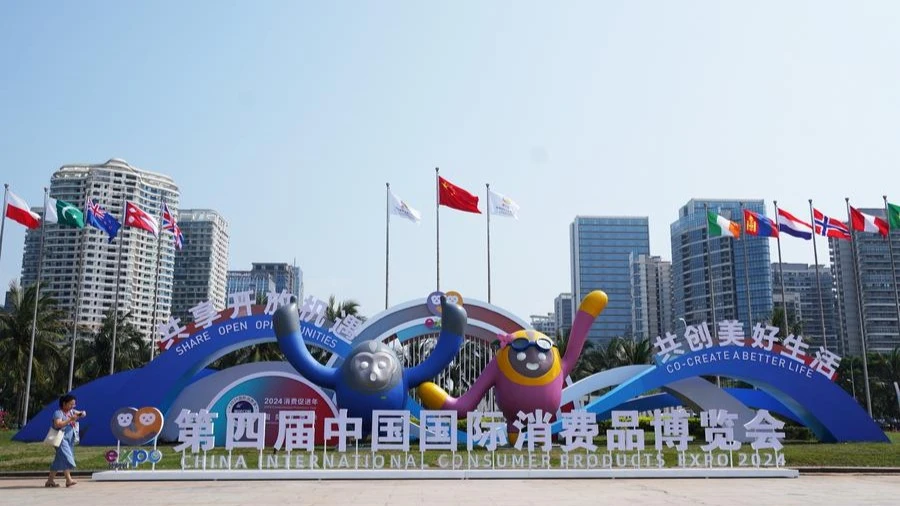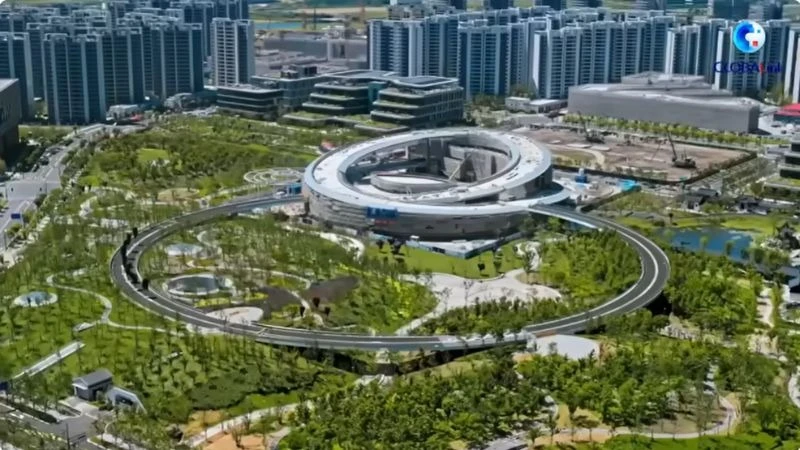China expands silver tourism train services to cater to growing elderly travel market

As the sun rose over the snow-capped peaks of the Qinling Mountains, a group of silver-haired retirees eagerly boarded a Silk Road-themed tourism train in Xi'an, the capital of northwest China's Shaanxi Province.
For the next three days, these seniors embarked on a leisurely journey through the picturesque landscapes of central China, relaxing in hot springs and savoring local delicacies, traveling on one of many specialized tourism trains that are revolutionizing travel for China's growing elderly population.
On Tuesday, nine Chinese government agencies and state-owned enterprises, including the Ministry of Commerce (MOC) and the Ministry of Culture and Tourism, unveiled an action plan to expand and improve senior-friendly tourism train services, in the latest bid to create more inclusive and enjoyable travel experiences for the elderly.
The initiative aims to enrich the tourism market, promote services consumption and cater to the growing demand for elderly-friendly travel options. It plans to create a nationwide network of specialized trains catering to older travelers by 2027, with over 100 designed routes and 2,500 scheduled trips annually, according to a press conference held later on Tuesday.
The concept of senior-focused rail travel has been gaining momentum across China. According to China Railway Qinghai-Xizang Group Co., Ltd., over 77 percent of passengers on its special tourism trains have been aged 55 or above in recent years.
A 15-day railway tour to the Xinjiang Uygur Autonomous Region has proved particularly popular, allowing seniors to explore the vast region's diverse landscapes and cultural heritage in comfort. "Compared to self-drive tours, railway tours cut costs, save time and conserve energy, making them very suitable for elderly travelers," 61-year-old Wang Zhanqi, who hails from Qinghai Province and took the Xinjiang railway tour last year, told Xinhua.
He particularly enjoyed photographing the winding streets and traditional architecture in the ancient city of Kashgar, and sampling water from Karez wells, which collect the melted ice and snow from the Tianshan Mountains.
Shaanxi's Silk Road train, capable of carrying over 200 passengers per trip, is equipped with senior-friendly features like wide beds, temperature control systems and emergency call buttons. The train also boasts such entertainment facilities as karaoke rooms and mahjong tables, creating a lively and social atmosphere for its passengers.
These specialized trains provide more than just transportation, offering comprehensive services tailored to the needs of older travelers. Many feature onboard medical staff, health monitoring equipment and specially designed meals. The popular Panda Express service, which departs from Sichuan Province, includes niche cultural activities such as ethnic-style welcome ceremonies and traditional performances, adding a level of cultural immersion to an already distinctive journey.
"We strive to ensure a safer, more comfortable travel experience for the elderly," said Yang Tao, general manager of Xi'an Railway International Travel Service Co., Ltd. "Silver-haired tourists generally have strong purchasing power and are inclined to buy handicrafts."
The economic potential of this market is substantial. According to a recent blue paper on China's silver economy, the sector is currently valued at 7 trillion yuan (about 976 billion U.S. dollars), accounting for about 6 percent of the country's GDP, with tourism being a key growth area.
Elderly adults in China had amassed wealth totaling 78.4 trillion yuan by 2023, according to the China National Committee on Ageing. And the overall silver economy is projected to reach 30 trillion yuan by 2035, which would represent 10 percent of China's GDP.
Recognizing the increasing purchasing power and travel aspirations of China's elderly population, the action plan released on Tuesday outlines a series of measures to develop the sector further, including measures to expand services offerings, develop themed routes, and enhance medical and senior care services on trains.
Measures will be taken to upgrade the trains so that they are more age-friendly, green and comfortable, which will be supported by China's large-scale equipment upgrade and consumer goods trade-in programs, and additional measures will be implemented to tailor themed travel routes and products for seniors.
Highlighting the integration of health care services into senior tourism trains, the action plan notes that medical professionals will be stationed on board, and medical expenses incurred during travel will be eligible for cross-regional medical insurance settlement, simplifying the claims process for elderly passengers.
The plan also advocates improved coordination between tourism trains and scenic areas, encouraging local tourist destinations to offer tailored services such as reservations, green channels, transportation connections and dedicated reception facilities for senior travelers.
The action plan aims to create a comprehensive national network of senior-friendly tourism trains by 2027, with established service standards and recognizable brand identities.
These specialized train services will utilize off-peak travel periods to avoid conflicting with regular passenger services, ensuring that the trains operate efficiently without disrupting the broader transportation system, MOC official Kong Dejun said at the press conference.
From onboard medical care to senior-friendly meals and entertainment, silver tourism trains are more than a mode of transport: they are redefining what it means to travel in one's golden years. Analysts note that China's railways, already arteries of economic development, are poised to enrich the lives of the nation's growing elderly population.
Top Headlines
© 2025 IPPMEDIA.COM. ALL RIGHTS RESERVED






















